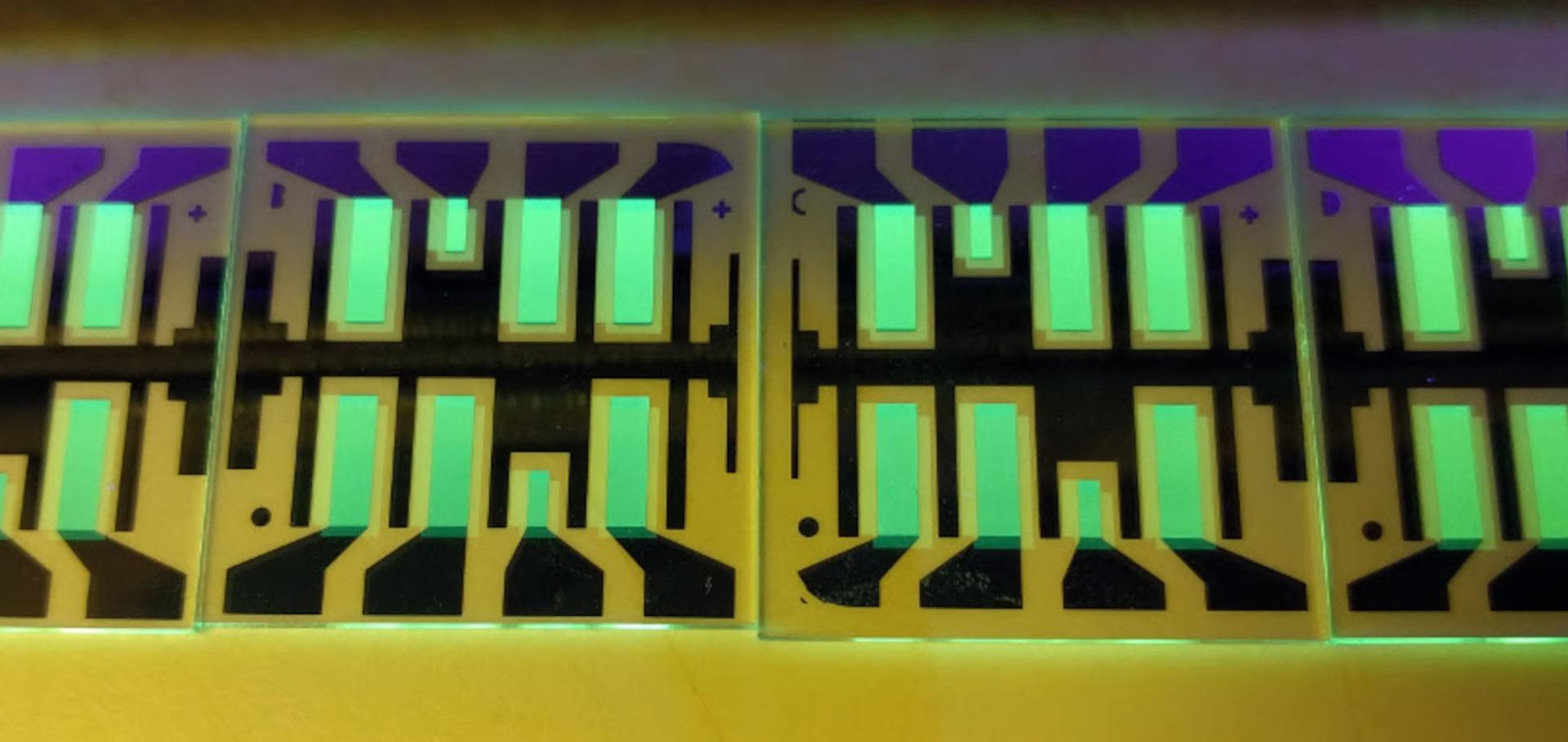Structure-property relationship of acceptor-substituted oligothiophenes
Tetrahedron 66:45 (2010) 8729-8733
Abstract:
A series of oligothiophenes that are end-capped with dicyanovinyl (DCV) and 1,3,2-(2H)-dioxaborine (DOB) moieties has been prepared using standard procedures. Their optoelectronic properties have been investigated by cyclic voltammetry and optical absorption. The optical absorption has been measured both in solution and thin film state. © 2010 Elsevier Ltd. All rights reserved.Organic solar cells with very high fill factor and voltage using tetrapropyl-tetraphenyl-diindenoperylene as green donor
Physica Status Solidi - Rapid Research Letters 4:11 (2010) 329-331
Abstract:
We present 2,3,10,11-tetrapropyl-1,4,9,12-tetraphenyl-diindeno[1,2,3-cd:1′,2′,3′-lm]perylene (P4-Ph4-DIP) as new green donor for small molecule organic solar cells (SMOSC). P4-Ph4-DIP absorbs in the green spectral range of 490-580 nm and thus is a decisive building block towards broad coverage of the sun spectrum. SMOSC with P4-Ph4-DIP as donor and C60 as blue-absorbing acceptor display very high fill factors FF > 76% and open circuit voltages of 0.99 V, reaching η = 1.92% for 12 nm P4-Ph4-DIP. Current voltage and external quantum efficiency spectra suggest that an exciton diffusion length ED < 20 nm is the main limiting factor. © 2010 WILEY-VCH Verlag GmbH & Co. KGaA, Weinheim.Detection of trap charge in small molecular organic bulk heterojunction solar cells
Physical Review B - Condensed Matter and Materials Physics 82:12 (2010)
Abstract:
We detect and measure the trap charges in a small molecular bulk heterojunction solar cell under operating conditions. The trap-charge density is estimated from capacitance measurements with light incident on the sample. At high intensities (∼1sun, 100mW/ cm2), the trapped charge concentration leads to a spatial distortion of the electric field in the device. The lower limit of the trap-charge density is estimated to be 6× 10 16 cm-3. The frequency dependence of the capacitance suggests that the charges are trapped in a manifold of deep states present in the energy gap of the semiconductors. The distortion of the electric field by this trap charge affects the charge-carrier collection efficiency. © 2010 The American Physical Society.Organic thin-film layer investigation with pair-distribution function technique
Acta Crystallographica Section A: Foundations and advances International Union of Crystallography (IUCr) 66:a1 (2010) s73-s73
X-ray investigation of the morphology of DCV6T-Bu4 films for organic solar cells
Acta Crystallographica Section A: Foundations and advances International Union of Crystallography (IUCr) 66:a1 (2010) s97-s98


